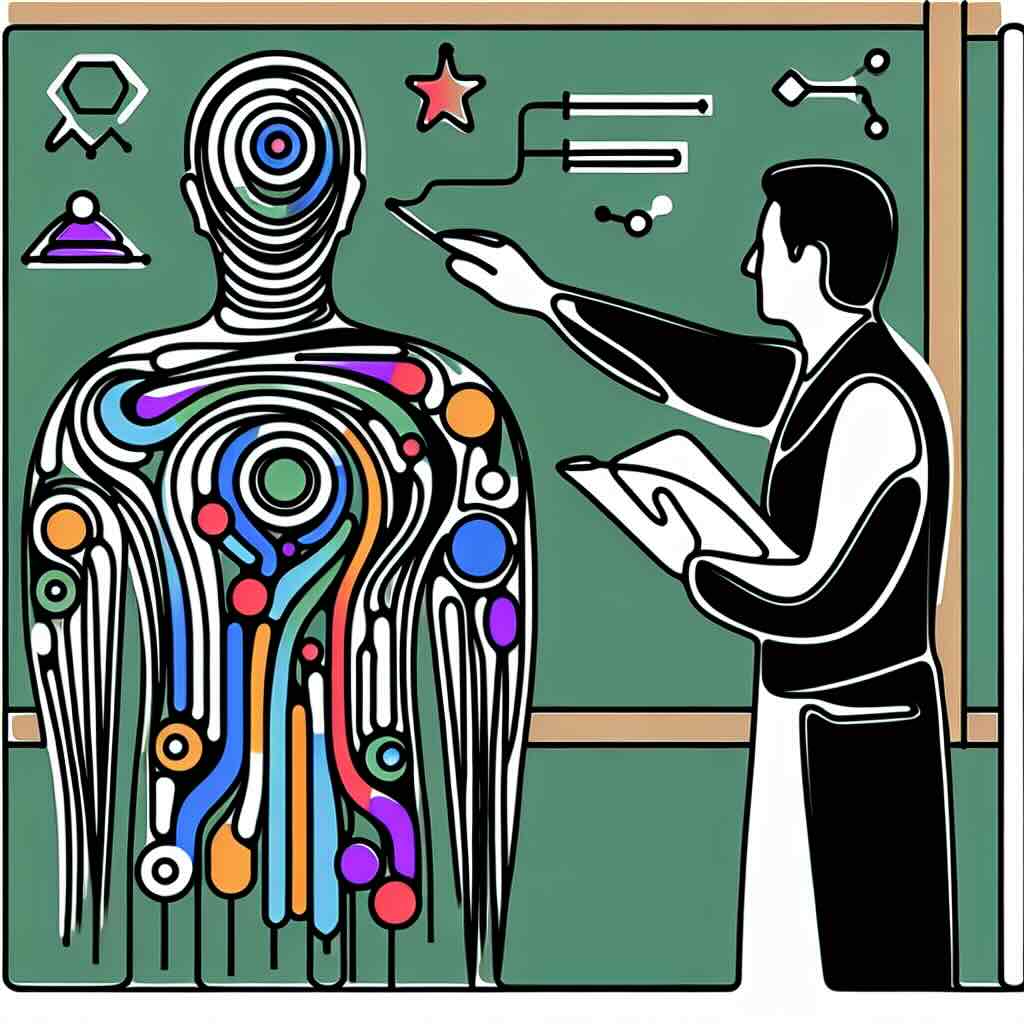Great learning experiences are rarely designed in isolation. Collaboration, co-design, and co-creation are essential approaches that bring together instructional designers, educators, subject matter experts, and learners to build more effective, engaging, and relevant learning content. By fostering shared ownership and diverse input, these approaches improve course quality, ensure alignment with learning objectives, and create learning experiences that truly meet learner needs. In this article, we explore how these methods reduce siloed thinking, enhance engagement, and strengthen instructional design practices.
Table of contents
- What is Collaborative Learning Design and Content Development?
- How Collaboration Reduces Top-Down Approaches and Siloed Thinking
- Definitions: Collaborative Learning Design, Co-Design, and Co-Creation
- Co-Design vs. Co-Creation – Understanding the Differences
- The Power of Co-Design in Learning
- The Role of Co-Creation in Learning
- How Collaboration Improves Practice and Develops Skills
- Benefits of Working Together to Design and Develop Courses
- Risks of Collaborative Learning Design
- One Thing You Can Try Today
- Related Topics
What is collaborative learning design and content development?
Collaborative learning design is an approach that integrates people's multiple perspectives and expertise in the creation of learning experiences. Instead of a single instructional designer or educator developing in isolation, collaborative design involves subject matter experts, learners, industry professionals, and other stakeholders, working together. This approach ensures that content is accurate, relevant, and aligned with real-world applications.
Collaborative content development takes this a step further by actively involving multiple contributors in the creation of course materials, such as multimedia content, assessments, and interactive activities. This results in a richer and more engaging learning experience.
How collaboration reduces top-down approaches and siloed thinking
Traditional course development often follows a top-down approach where instructional designers or educators make decisions without fully incorporating feedback from stakeholders. This can lead to:
- A lack of engagement from subject matter experts or learners.
- Misalignment with course objectives or real-world application.
- Limited innovation due to working in isolation.
- Inefficiencies and costly revisions later in the process.
By shifting to a collaborative approach, teams can break down silos, encourage open communication, and ensure that learning experiences are aligned with both organisational goals and the identified learner needs.
Definitions: Collaborative learning design, co-design, and co-creation
While related, it is important to distinguish the difference between these three approaches:
- Collaborative learning design: Any approach where multiple stakeholders contribute to shaping a learning experience.
- Co-design: A structured process where educators, designers, and learners actively work together to design learning experiences, ensuring alignment with known needs.
- Co-creation: A more intensive process where stakeholders, including learners, are involved not just in the design but also in the development and implementation of learning content.
Co-design vs. co-creation – understanding the differences
While co-design and co-creation are related, they serve different purposes:
- Co-design focuses on the ideation, planning and conceptualisation of learning experiences. Stakeholders contribute ideas, identify challenges, and shape course structures before content is created. This ensures a strong foundation and where contributions are most flexible and easy to change.
- Co-creation involves stakeholders in active development of course content, such as creating videos, writing case studies, or designing interactive exercises. This results in deeper engagement and authenticity in learning materials.
The Power of co-design in learning
Co-design is a structured approach that actively involves stakeholders (educators, instructional designers, subject matter experts, learners) in shaping the structure, flow, and objectives of a learning experience. Rather than designing in isolation, co-design brings multiple perspectives into the early stages of course creation, ensuring that learning materials are meaningful, relevant, and aligned with real-world challenges.
By working collaboratively, teams can surface potential issues before they become major roadblocks, reducing inefficiencies in the development process. Co-design is a space for innovation, as diverse perspectives lead to richer, more engaging course structures.
Additionally, when educators and learners contribute and combine insights, they will feel a deeper level of ownership, increasing engagement and adding authenticity to the produced learning experience. This approach results in courses that are well-structured, learner-centred, and likely to achieve their intended learning outcomes.
Co-design is particularly valuable when creating programs that need to evolve over time, as it establishes a foundation for continuous improvement based on user feedback.
The role of co-creation in learning
Co-creation takes collaboration a step further by involving stakeholders not just in the planning phase but also in the active development of course content. In this approach, learners, educators, and industry experts contribute directly to creating learning materials, activities, and assessments.
Example: This could mean learners sharing real-world case studies, subject matter experts crafting assessments, or professionals from the field helping to develop interactive simulations.
By co-creating content, learning experiences become more authentic, dynamic, and directly applicable to real-world contexts. Learners engage more deeply when they see their contributions reflected in the course, while educators and designers benefit from fresh insights and expertise they might not have considered alone.
This approach is particularly useful in fast-changing fields where new developments, industry practices, or emerging technologies need to be integrated into learning experiences regularly. Co-creation ensures that content remains current, relevant, and engaging, keeping courses aligned with professional and academic standards.
How collaboration improves practice and develops skills
Collaboration in learning design is not just about creating better courses, it enhances the skills and expertise of everyone involved. For instructional designers, working with diverse contributors strengthens facilitation, project management, and user-centred design skills.
For educators and subject matter experts, collaboration improves their ability to structure content effectively, adopt learning design principles themselves and engage with a process that helps them make their learning more engaging.
Learners who participate in co-design or co-creation also develop essential skills such as critical thinking, problem-solving, and team communication, which are valuable professional skills. Furthermore, collaboration is a continuous professional development activity, by engaging in discussions with learning designers and other experts, educators stay informed about new trends and best practices in the field.
From an organisational perspective, collaboration builds a culture of knowledge-sharing and innovation, leading to long-term improvements in course quality and training effectiveness. By breaking down silos and encouraging teamwork, learning design becomes an iterative, evolving process that benefits both the creators and the learners.
Benefits of working together to design and develop courses
- Stronger alignment with learning objectives – Ensures courses meet the needs of both learners, the program and the organisation.
- More engaging and relevant content – Increases learner motivation, deeper levels of authenticity and application of knowledge.
- Efficient development process – Reduces time spent on revisions by getting it right from the start.
- Diverse perspectives – Leads to richer, more inclusive learning experiences.
- Stronger stakeholder buy-in – Encourages wider adoption of courses and materials.
Risks of collaborative learning design
- Time and coordination challenges – Involving multiple stakeholders can slow down decision-making.
- Over-complexity – Too many voices may lead to confusion without clear ownership, delegation and process.
- Scope creep – Collaboration can lead to ever-expanding ideas and misunderstanding of roles - it requires careful project management.
- Conflicting priorities – Different stakeholders may have competing interests that need balancing.
One thing you can try today
- Start small by inviting at least one new stakeholder (another subject matter expert, learner representative, industry professional) to review your course while it's still in the early stages of design or development.
- Ask for their feedback on the structure, activities, or assessment approach of your course.
- Capture their feedback, make some changes and reflect on the value of this for your other projects.
Even this small step can begin to open up new insights and foster a more collaborative approach to learning design.
Conclusion
Collaboration, co-design, and co-creation are key to building effective learning experiences. Co-design shapes the vision and structure of a course, while co-creation brings stakeholders into content development, they will improve quality, engagement, and alignment with real-world needs.
Beyond better courses, collaboration enhances skills for all involved, from refining instructional design expertise to strengthening educators’ content structuring abilities. While it requires coordination, the benefits - more effective, inclusive, and adaptable learning - far outweigh the challenges.
Related Topics
- Building Inclusive Design Practices: Addressing Diverse Learner Needs
- Co-design with Learners to Create Learner-Centred Experiences
- Building a Collaborative Instructional Design Culture: Fostering Team Co-Creation
- Human-Centred Design: Putting Learners First
- Developing High-Impact Learning Objectives: A Team Approach







